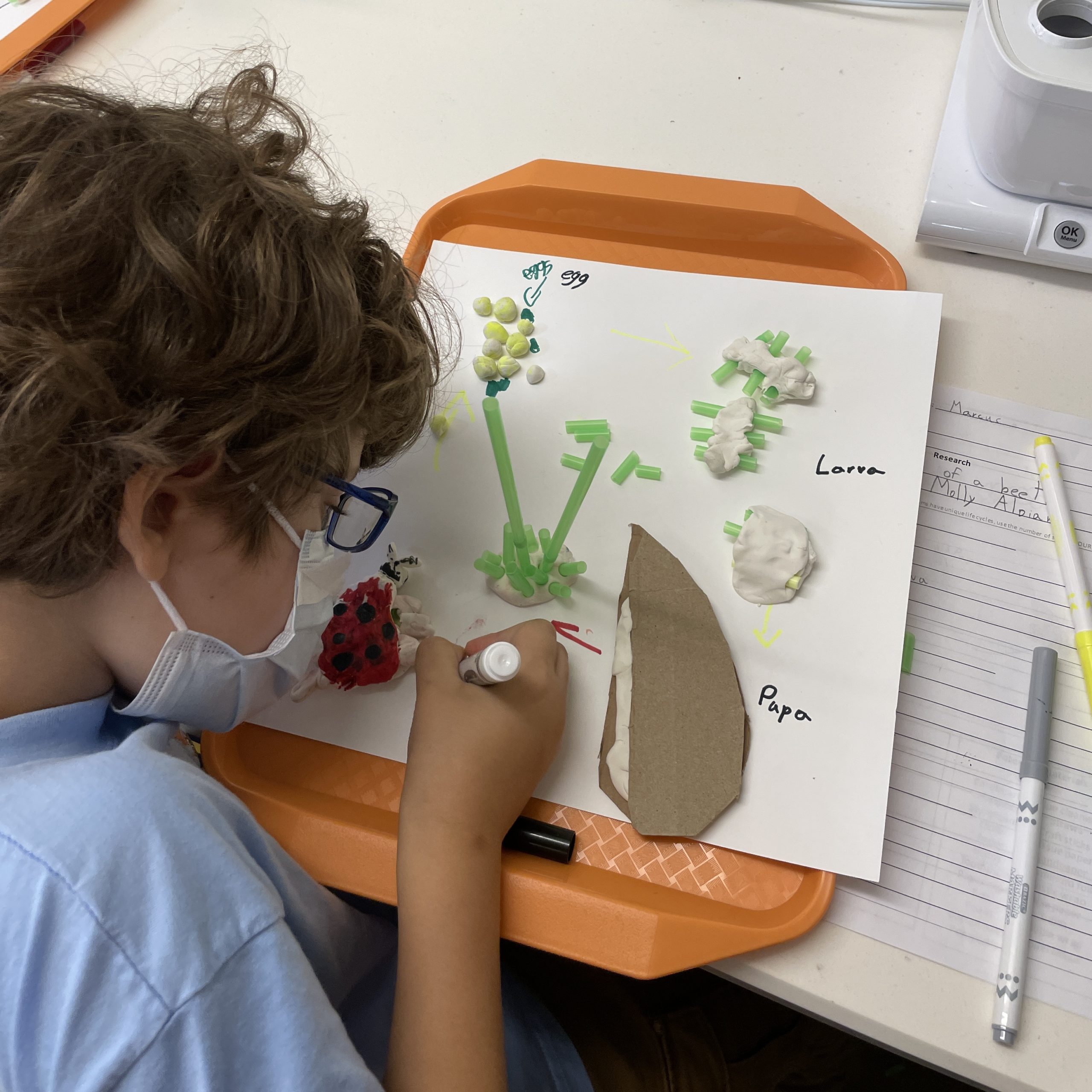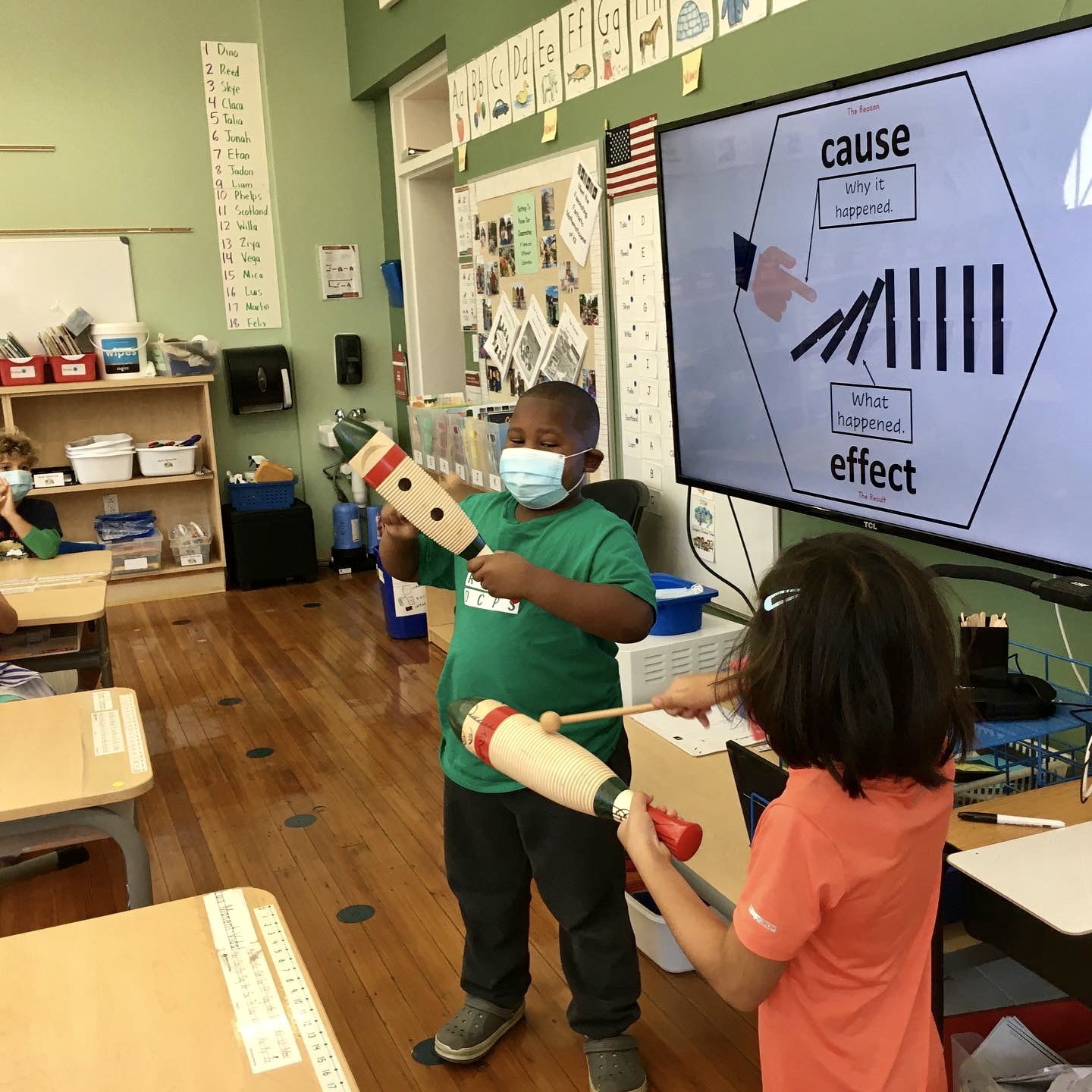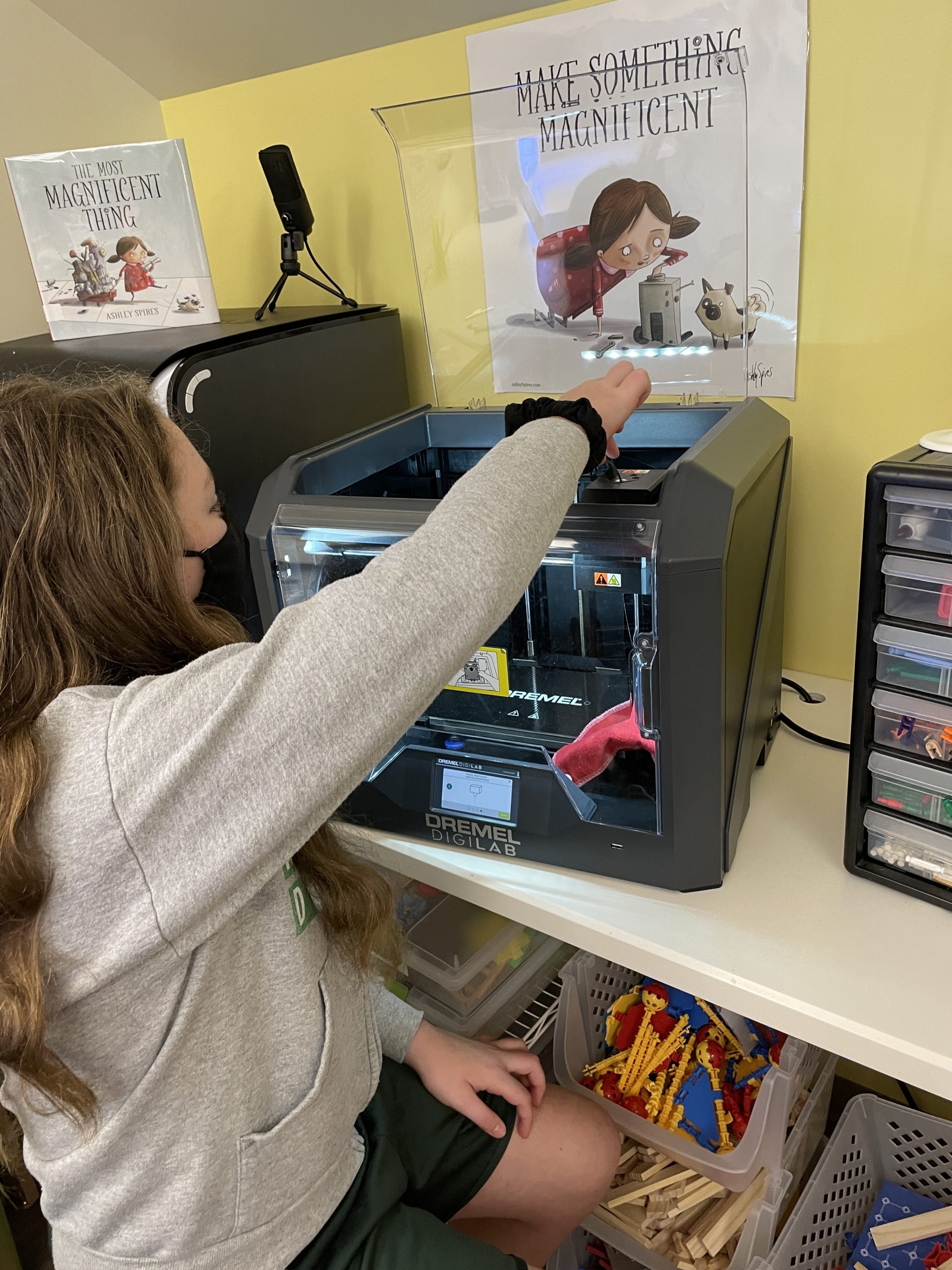Science
Science education at Ross creates a space for students to make sense of phenomena in the natural and designed world and construct solutions to authentic problems with the Engineering Design Process. The goal of Ross’s STEM programming is to build 21st century learners by igniting curiosity, provoking thinking and problem solving and developing global consciousness.


How Science is Taught
Our STEM instruction focuses on the 3 Dimensions of the Next Generation Science Standards (NGSS):
- Disciplinary Core Ideas
- Scientific and Engineering Practices
- Crosscutting Concepts
Disciplinary Core Ideas (DCIs) indicate what students need to know. Each grade engages in learning Earth Science, Life Science, Physical Science, and Engineering. DCIs allow for coherence and deep exploration by organizing the progression on when content is taught at each grade level.
Scientific and Engineering Practices (SEPs) ensure students “unfold investigation” as expert scientists and engineers do. SEPs include asking and answering questions, developing and using models, planning and carrying out investigations, analyzing and interpreting data, using mathematical and computational thinking, constructing explanations and designing solutions, engaging in arguments from evidence, obtaining, evaluating and communicating information.
Crosscutting Concepts (CCCs) support how students scientifically think by providing them with connections and common language across content areas. CCCs increase students’ flexibility in thought and understanding of new content. CCC include patterns, cause and effect, system and system models, energy and matter, structure and function, stability and change, and scale, proportion, and quantity.
What shapes our STEM learning?
Ross uses Stemscopes as its primary curriculum. Each unit includes an overarching phenomenon with a culminating mission or task the students are working toward. Within each unit, the lessons follow the 5E structure:
- Engage: This phase is where teachers access students’ prior knowledge and potential misconceptions.
- Explore: This phase is where students develop concepts and/or skills through common experiences. This phase is hands-on learning.
- Explain: This phase is where students learn to verbalize the concepts previously explored. The teacher builds onto understand with vocabulary and connected explanations.
- Elaborate: This phase is where student extend their understanding through practicing new skills. Students can also deepen and broaden their understanding based on interest.
- Evaluate: This phase is where students assess their understanding and abilities and teachers evaluate to determine next steps. (More information about the use of evaluations below.)


Enrichments
STEM focused enrichments are offered before and during the day.
Field Trips
We work to take deeply integrated STEM field trips with each of our classes. This looks like taking trips in the DMV to locations like the Natural History Museum, Arboretum, Botanic Gardens, and even the Iceplex to see the Caps practice. This also looks like inviting scientists and engineers in the field into our classroom (usually virtually) to allow students to ask questions and hear about how their learning connects to our world. We want students to actively engage in the natural phenomena all around them and see science and engineering as viable careers in the future.
Before School Enrichments
K-5 students are offered before school enrichments in the Lab. These enrichments include Makerspace (K-1), Coding Club (2-3), and Genius Hour (4-5). Click Here to learn more.

